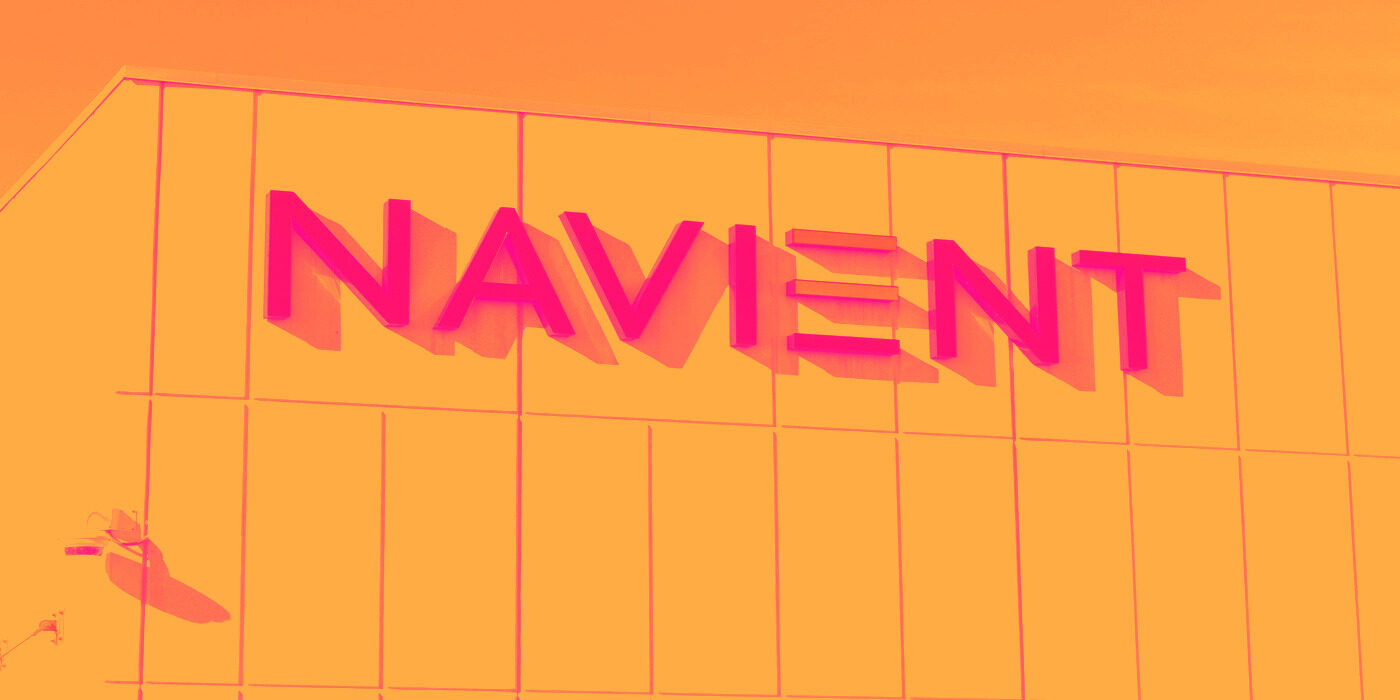
Navient’s third quarter was marked by significant revenue and earnings misses relative to Wall Street expectations, yet the market responded positively, reflecting confidence in the company’s strategic execution. Management pointed to robust loan origination growth, particularly in the Earnest refinance and in-school lending lines, and emphasized progress on cost reduction initiatives. CEO David Yowan highlighted that, despite elevated provision expenses driven by revised credit and prepayment assumptions in legacy portfolios, the company made substantial headway in streamlining operations and lowering its expense base.
Is now the time to buy NAVI? Find out in our full research report (it’s free for active Edge members).
Navient (NAVI) Q3 CY2025 Highlights:
- Revenue: $169 million vs analyst estimates of $162.8 million (62.6% year-on-year decline, 3.8% beat)
- Adjusted EPS: -$0.84 vs analyst estimates of $0.18 (significant miss)
- Adjusted Operating Income: -$108 million vs analyst estimates of $62 million (-63.9% margin, significant miss)
- Operating Margin: -66.9%, down from 6.6% in the same quarter last year
- Market Capitalization: $1.17 billion
While we enjoy listening to the management's commentary, our favorite part of earnings calls are the analyst questions. Those are unscripted and can often highlight topics that management teams would rather avoid or topics where the answer is complicated. Here is what has caught our attention.
Our Top 5 Analyst Questions From Navient’s Q3 Earnings Call
- William Ryan (Seaport Research Partners) asked whether the elevated provision expense was a cleanup for legacy portfolios and pressed for details on default and recovery assumptions. CEO David Yowan explained that most provision increases reflect persistent trends in legacy portfolios, while CFO Joe Fisher added that recovery rate assumptions have stabilized at 17% for private loans.
- Mark DeVries (Deutsche Bank) inquired about the concentration of credit weakness and what factors are driving increased reserves. Yowan clarified that legacy private loans are the primary source, with macroeconomic and post-pandemic policy changes contributing.
- Moshe Orenbuch (TD Cowen) questioned the shifting cash flow timing in portfolio assumptions and the impact on net interest margin. Fisher explained that lower prepayment speeds delay cash flows to later years but have minimal ongoing margin impact, given the current portfolio mix.
- Richard Shane (JPMorgan) explored whether reserve rates have stabilized, especially for new versus legacy loans. Fisher stated that new refi originations are reserved at 1.5%, while older vintages saw some reserve increases.
- Sanjay Sakhrani (KBW) asked for a breakdown of provision drivers and whether rising graduate unemployment is affecting portfolio quality. Fisher replied that most of the provision is linked to trends in the seasoned portfolio and that recent graduate borrowers are not showing elevated risk.
Catalysts in Upcoming Quarters
In the coming quarters, our team will closely watch (1) the pace and sustainability of loan origination growth, particularly in the Earnest refinance and in-school segments; (2) execution on further expense reductions as legacy infrastructure is phased out; and (3) the impact of evolving federal policy on borrower repayment behavior and prepayment speeds. The November Earnest business update and further ABS securitizations will also serve as key signposts for Navient’s strategic progress.
Navient currently trades at $12, down from $12.94 just before the earnings. In the wake of this quarter, is it a buy or sell? See for yourself in our full research report (it’s free for active Edge members).
High-Quality Stocks for All Market Conditions
Donald Trump’s April 2025 "Liberation Day" tariffs sent markets into a tailspin, but stocks have since rebounded strongly, proving that knee-jerk reactions often create the best buying opportunities.
The smart money is already positioning for the next leg up. Don’t miss out on the recovery - check out our Top 5 Growth Stocks for this month. This is a curated list of our High Quality stocks that have generated a market-beating return of 183% over the last five years (as of March 31st 2025).
Stocks that made our list in 2020 include now familiar names such as Nvidia (+1,545% between March 2020 and March 2025) as well as under-the-radar businesses like the once-micro-cap company Kadant (+351% five-year return). Find your next big winner with StockStory today.
StockStory is growing and hiring equity analyst and marketing roles. Are you a 0 to 1 builder passionate about the markets and AI? See the open roles here.






